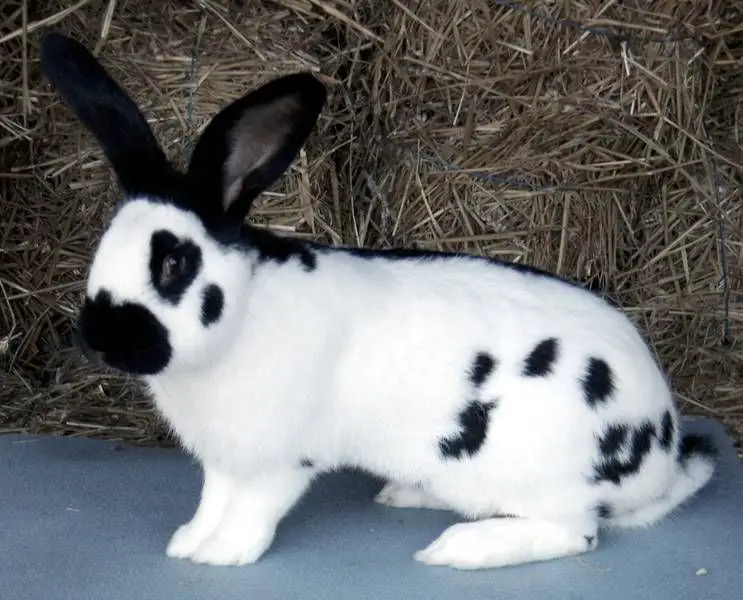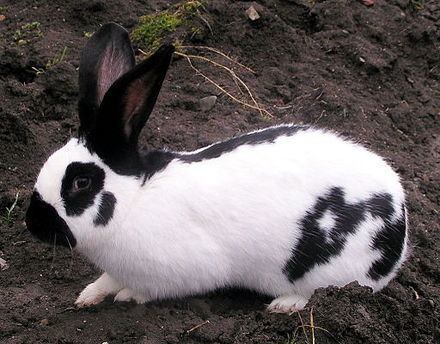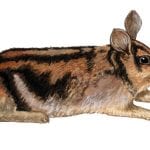Scientific Facts
| Common Name: | Blanc de Popielno |
| Life Span: | 8 to 12 years |
| Size: | Large |
| Country of Origin: | South-eastern Poland |
Physical Description
Blanc de Popielno is a kind of albino rabbit that has an average weight of 4 to 5 kilograms. It is a peculiar, huge white rabbit, which is also known as Popielno White.
Lifespan
The average lifespan of Blanc de Popielno is around 8 to 12 years, under optimal conditions. Although these creatures are strong enough, they cannot last long if they will be exposed to a poor environment with a poor diet.
Eating Habits
Blanc de Popielnos are known to be herbivores. They feed on a plant-based diet. These creatures are also known as practical feeders and also feed on seeds, fruits, buds, tree bark, and roots.
Sleeping Habits
Blanc de Popielno, the same with other breeds, follow a particular sleeping pattern. Their sleeping habit is quite different from humans, no matter how hard you teach them to adopt your sleep routine. Rabbits are considered to be prey. Since they develop thinking that they can be easily made as a meal to predators, they needed to protect themselves and be cautious against the predators.
These creatures are crepuscular. They are seen highly dynamic during dawn and dusk. They stay up late until late evening and wake up early morning. They snooze and sleep during day and night. They learn to sleep with a pattern in such a manner as to inhibit falling prey to harmful predators hiding in the shadows. They have to be completely awake and speeding to hide and escape from danger.
Once the sun reaches its low angle, which normally takes place at dusk and dawn, it is a lot more manageable to locate predators. This is the reason why it is the best time for them to go out of their burrows to look for food and interact with other rabbits.
When they sleep, these creatures will normally proceed to their sleeping area lie down to nap and sleep. They will sometimes go out for limited periods of the day to use their litter box or eat; however, it is not unusual for them to sleep for many hours during the day.

Development and Reproduction
The Blanc de Popielno is a breed that is practically proportionate to the New Zealand White in terms of production ability. Babies are delivered with no hair, with sealed ear canals and eyelids. In spite of their helpless condition, the mother does not brood its young. The kits start to abandon their nest and feed on solid food at roughly 18 to 21 days.
How to Breed
Determining the Sexes
Determining the sexes of Blanc de Popielnos can be easy if you know the method. The male rabbits have an intact body and head. The penile covering is cylindrical, and its penis may be easily squeezed at the age of 2 months. Females, on the other hand, often form a dewlap or skin fold underneath the skin. Their ovaries are expanded and are found comparably caudal.
Courtship and Mating
The buck pursues a doe, gently humming while licking and sniffing the doe for roughly 30 seconds. The receptive doe will flatten on the ground. Lordosis is noticed when pressure is exerted in her back, while the non-responsive doe will escape from the buck, and once treed, it may bite or vocalize. Mating starts when the buck holds the doe through the nape with its teeth. The buck mounts to the doe, vigorously lunging until ejaculation happens comparably quickly.
Eggs and Incubation
Rabbits have a comparably short period of gestation that is around 31 days. The size of the litter is around 4 to 12 kits.
Common Health Problems
Overgrown Teeth
A Bland de Popielno’s teeth continuously grow their entire life. If your pet is not regularly crushing its teeth down by feeding on fibers, you will notice their molar teeth developing stinging spikes which injure the tongue and the cheeks. This manifestation will bring pain to the rabbit, which can make them hesitant or incapable of eating. The incisors seen in front of the mouth may, in grave cases, grow in curl. This implies that the rabbit can neither eat nor close its mouth.
Snuffles
Direct contact with a rabbit that is affected with an infection may easily spread the Pasteurella multocida bacterium to your Blanc de Popielno. The bacteria is said to attack the eyes and/or nose, hence labeling the disease as “snuffles.” Pasteurella can also affect other parts of the body, including the ears. It can also create abscesses and can also lead to uterine infections.
Certain strains on the bacteria stay inherent in the nasal tract of the rabbit until the immune system is positioned under stress. Lowering the levels of stress for infected Bland de Popielno is a great way of preventing this disease from recurring.
Hairballs
Hair is commonly seen in the stomach of rabbits while they self-groom. Nevertheless, since these creatures cannot vomit, the hair needs to penetrate the gut. If it cannot, then it will create a blockage and severe complications. Hairballs are very rampant that they are always perceived as an issue among rabbits that are not feeding and lethargic.
Uterine Tumours
All-female Blanc de Popielnos may form a kind of cancer named uterine adenocarcinoma, and it must be uncertain anytime an un-fixed female rabbit gets sick. Some common manifestations of this disease are lethargy, blood tainted vaginal discharge, mammal gland cysts, and aggressive behavior. Nevertheless, this disease can be prevented by desexing the rabbit at an early age, commonly around 4 to 6 months.
Myxomatosis
Myxomatosis is a kind of virus that is disseminated through fleas, mosquitoes, or direct contact between a vulnerable rabbit and an infected rabbit. This disease is commonly determined through swelling and discharges coming from the nose, eyes, and anogenital area. Owners may invest in a rabbit hutch that is mosquito-proof or bring the rabbit inside during dusk and dawn when the occurrence of mosquitoes becomes higher.
Rabbit Haemorrhagic Disease Virus (RHDV)
Rabbit Haemorrhagic Disease Virus is transmitted by flies, mosquitoes, and/or through direct or unintended contact with an affected rabbit. Currently, RHDV has four kinds of strains, namely; RHDV1, RHDVa, RHDV2, and RHDV1 K5). In many adult rabbits, RHDV quickly progresses from lethargy and fever to immediate death within a period of 48 to 72 hours of being infected. RHDV requires an incubation period that lasts for 1 to 3 days. Many rabbits will demonstrate no indications of external manifestations of RHDV.
The clinical symptoms include fever, lethargy, poor appetite, and restlessness. This disease may lead to severe liver damage with the development of blood clotting irregularities. RHDV can be lethal because of internal hemorrhage and/or the blockage of the supply of blood in vital organs. RHDV portrays a mortality rate of 70 to 90 percent in vulnerable rabbits.
Preventing Illnesses
Blanc de Popielno requires a diet that is 80 to 90 percent fiber in the form of grass or oaten hay to ensure a healthy disposition. The remaining part of the diet must be composed of leafy greens, complemented with pellets as well as other treats in low portions. To further keep your Blanc de Popielno protected from illnesses, you should learn to execute the basic precautionary measures. The rabbit must be neutered except if you specifically intend it for breeding. Every day, your pet has to be monitored and checked to guarantee that it is eating regularly, and passing a lot of dry droppings. It is also important that you inspect for indications of illness to supervise the health of your rabbit. Consider doing an annual check-up with a veterinarian.
Behavior
Blanc de Popielno is a great rabbit. It is a trainable pet. Many owners were able to teach their pets on how to use their litter boxes. These creatures love to spend most of their time relaxing and loosening up in their litter box.
Habitat
Enclosure
Blanc de Popielno has unique characteristics. If you want these creatures to be part of your family, you must provide it a good shelter. A lot of owners choose to use a cage that has an open door. You should know that enclosures with close walls should be avoided because they do not offer sufficient ventilation for the pet. Their enclosure should be rabbit-proof. There should be an area for playing, eating, and retreating.
Toys
The best way to keep your Blanc de Popielno exercised, active, and happy, particularly during the moments when you are not able to interact with it, are toys. Rabbits would love to play various toys. However, when choosing toys to provide your pet, it is important that you carefully examine their safety. Toys should provide your pet entertainment. Some of the favorites are woven grass hut, maze haven, jumbo willow ball, rabbit dumbbell, rabbit ring toss, activity zone play area, fiddlesticks, vine twists, and grassy mat.
Toys work best in entertaining your rabbit while it is confined. Rabbits that are well entertained are believed to live longer because their minds are well-engaged, keeping them from feeling depressed and bored. Toys are also safe methods of play and exercise for the rabbits. These will help their minds and bodies becoming healthy.
Diet
Blanc de Popielno rabbits need a healthy and nutritive food diet to achieve that healthy disposition. The majority of their diet should be composed of excellent-quality hay and grass. Fresh and clean water is also important for these creatures. You should know that these animals have a digestive system that requires grass or hay for it to properly function. Thus, a nutritive supply is very crucial. You may supplement it with little quantity of pellets and leafy greens. Fruits and root vegetables like carrots must only be offered as a treat but in limited portions, because Blanc de Popielnos do not commonly feed on these pieces of stuff.
When feeding your rabbit, you mustn’t abruptly alter its diet should you have a plan to introduce your pet a new food. Some foods are not safe for rabbits, and the sudden change on a diet may also spoil the digestive system, which may cause illness. It would be best if you consult first your vet to confirm whether the new food is safe for the rabbit.
How to Care for Blanc de Popielno
Blanc de Popielno should receive a proper diet. This is highly essential if you want to prevent them from illnesses. They should be placed in an enclosure with an appropriate size. The enclosure must be spacious enough for the pet to move comfortably. For bedding, keep away from wood shavings and cedars, for they can cause severe health issues if ingested.
Where to Get a Pet Blanc de Popielno
There are plenty of stores that sell Blanc de Popielno. You may check on various pet stores and rabbit breeders if you are planning to get your Blanc de Popielno. However, it is very crucial that you carefully choose your seller. Make sure that you are transacting with a reliable and trusted seller. The first thing that you should do when getting your rabbit is to check its physical condition. You have to make sure that it is healthy and has no health issues.
FAQs
Does my Blanc de Popielno requires a cage?
Your Blanc de Popielno does not require a cage. Nevertheless, an inexperienced pet would probably be needed to be placed in a cage, or other protected shelter, while you are not available to supervise it and while you are asleep at night.
What is the ideal size for the cage?
The bigger the cage, the better. You have to make sure that the cage is spacious enough so that your pet can comfortable live in its shelter.
Should I allow my Blanc de Popielno to run loose outside?
Yes. However, you should be there to supervise your pet. See to it that the grasses outside were not sprayed with fertilizers or pesticides. Also, check the yard and see if there are holes in the fence.


